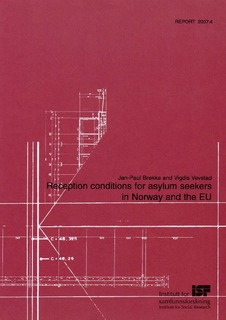Reception conditions for asylum seekers in Norway and the EU
Research report
Permanent lenke
http://hdl.handle.net/11250/177601Utgivelsesdato
2007Metadata
Vis full innførselSamlinger
- Rapport/Avhandling ISF [367]
Originalversjon
ISF-rapport. 103 p. Institutt for samfunnsforskning, 2007Sammendrag
The next four years will lay the premises for European asylum legislation and policy for years to come. A radical harmonization process is well underway. Coordinating mechanisms and common Directives have been put into place during the past ten years. Adoption and implementation of EU legislation constitutes the core in this process and will be fully operational by 2010. During 2006, the EU Directive on Reception Conditions was evaluated by the Odysseus academic network of lawyers on behalf of the European Commission. The current report is compatible with this European comparative study and relates closely to the outcomes of the Odysseus evaluation. The main research questions are: How does the Norwegian reception system stand when compared to the EU Directive on reception conditions? There are two aspects that can be at least analytically distinguished: Firstly, what are the legal sources on reception conditions in Norway and how do they correspond to the EU sources? Secondly: How do the factual reception conditions in Norway compare to the norms of the Direc-tive and the practice in the Member States. Different source of data were used to answer these questions. The study of documents, laws and regula-tions was combined with interviews with civil servants, managers of accommodation centers NGO per-sonell. The general picture that is presented shows that the reception conditions in Norway are in line with the new norms in Europe. Some exceptions include; insufficient formal regulation of reception conditions in legislation; no right to access education for asylum seekers aged 16-18; and insufficient attention payed specifi-cally to the rights of vicitms of violence and torture.
